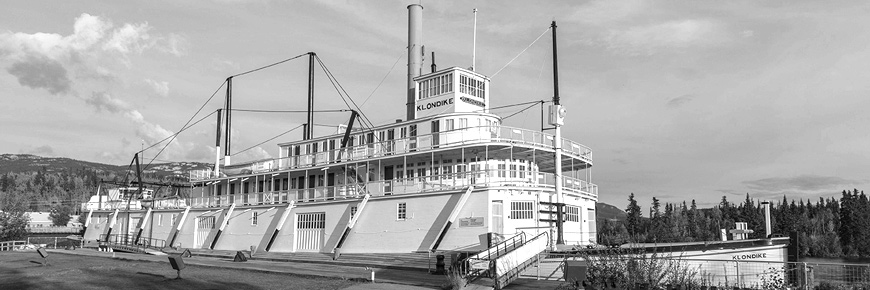
S.S. Klondike National Historic Site, by its prominence within the City, plays an important role as an icon for the City of Whitehorse.
Commemorative Integrity Statement
S.S. Klondike National Historic Site
National Historic Site Objectives
The objectives of the National Historic Sites Program are summarized in the following statement from Parks Canada’s Guiding Principles and Operational Policies:
- * To foster knowledge and appreciation of Canada’s past through a national program of historical commemoration.
- * To ensure the commemorative integrity of national historic sites administered by Parks Canada by protecting and presenting them for the benefit, education and enjoyment of this and future generations, in a manner that respects the significant and irreplaceable legacy represented by these places and their associated resources.
- * To encourage and support the protection and presentation by others of places of national historic significance that are not administered by Parks Canada.
Commemoration focuses on what is nationally significant about a site, and includes protection as well as presentation. The National Historic Sites Policy states that:
protection and presentation are fundamental to commemoration since without protection there can be no historic site to be enjoyed, and without presentation there can be no understanding of why the site is important to our history and, hence, to all Canadians.
S.S. Klondike National Historic Site, by its prominence within the City, plays an important role as an icon for the City of Whitehorse.
Definition and Purpose of Commemorative Integrity
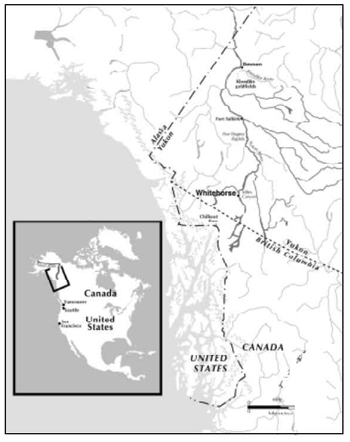
Commemorative integrity is used to describe the health or wholeness of a national historic site. A national historic site possesses commemorative integrity when the historic values and those cultural resources symbolizing or representing its importance are not impaired or under threat, when the reasons for the site’s national historic significance are effectively communicated to the public, and when the site’s heritage values are respected by all whose decisions or actions affect the site.
The purpose of a commemorative integrity statement (CIS) is to focus our management of a site on what is most important; and to ensure that we address the whole (the “site”), not just the parts (the “individual resources”). For national historic sites, commemorative integrity is key to developing and implementing work plans, along with service to clients and ensuring efficient use of public funds. Commemorative integrity is also the basis for reporting to Canadians on the state of their national historic sites.
To effectively focus on commemorative integrity it is necessary to identify and evaluate those characteristics of a site that led to its recommendation by the Historic Sites and Monuments Board of Canada (HSMBC) and designation by the Minister. Those characteristics that make the site of importance to all Canadians are Level 1 cultural resources. Characteristics of the site determined to have a historic value of regional or local importance are Level 2 cultural resources. All Level 1 and 2 cultural resources will be managed by Parks Canada according to the principles of the Cultural Resource Management Policy.
A sound grasp of historic value is essential to ensuring commemorative integrity. This includes a definition of what constitutes the extent of the nationally-designated historic place. The Parks Canada Cultural Resource Management Policy requires that evaluation of resources not only determines their levels, but “what it is that constitutes their value”
, that is to say, what particular qualities and features make up the historic value of the cultural resource. Historic value can reflect both physical (tangible or artifactual) as well assymbolic (intangible or associative) attributes. It can be derived from an association with many periods in history, a single episode, or from the interaction of nature and human activities.
It is those Level 1 values, that is those attributes of resources or messages, of importance to all Canadians, that shall be the highest management priority for Parks Canada. These values and the threats to them are described in more detail in the section “Commemorative Integrity Objectives”.
Commemorative Intent
Commemorative intent is a statement of what is nationally significant about the site. It refers specifically to the reasons for the site’s national significance, as determined by the ministerially-approved recommendations of the HSMBC. For Board minutes relevant to the S.S. Klondike see Appendix A.
In 1958, the HSMBC noted that it;
would like to record its interest in the general subject of transportation in Canada as a matter of national historic importance, and its concern that examples of different types of transport should be preserved. The Board believes that it is of national historic importance to preserve a typical representative or representatives of Lake and river stern-wheel steamship transport.
In 1967 the Board reviewed the question of transportation in the context of the Gold Rush and recommended;
that the history of transportation in the Yukon be considered of national historic importance, and that it be commemorated through a display at Whitehorse...centering around the S.S. Klondike.
The designation was reconfirmed in 1987 when;
the board first reaffirmed the national significance of both the S.S. Keno and S.S. Klondike. Further...the restored S.S. Klondike, at Whitehorse, should be given over to the interpretation of water transportation in the Yukon, exclusively.
On the basis of the foregoing, the Statement of Commemorative Intent for the S.S. Klondike is:
S.S. Klondike
The largest vessel ever to ply the Canadian portion of the Yukon River, this sternwheeler was built by the British Yukon Navigation Co. and launched at Whitehorse in 1937 to replace her namesake, which sank the year before. Klondike No. 2 was designed to expedite the movement of silver-lead ore on the Yukon River. A combination freight and passenger boat, she operated primarily between Whitehorse and Dawson. In 1954-55the vessel was placed in cruise service after an extensive refurbishment. Her retirement in 1955 brought to an end the era of commercial steamboat navigation in the Yukon.
The approved plaque text for the S.S. Klondike confirms the commercial importance of the river transport system in the Yukon and its demise in the mid 1950s.
The S.S. Klondike National Historic Site commemorates inland water transportation in the Yukon. It is a representative of the Yukon steamers and other vessels.
Commemorative Integrity
The National Historic Sites Policy states that a site has commemorative integrity if:
- the resources that symbolize or represent its importance are not impaired or under threat,
- the reasons for the site’s national historic significance are effectively communicated to the public, and
- the site’s heritage values are respected by all whose decisions or actions affect the site.
These three elements cover the major responsibilities of Parks Canada in the management of the National Historic Site. To measure the success and effectiveness of this management commemorative integrity objectives have been identified and listed after the description of each of the three elements. Therefore, at S.S. Klondike National Historic Site commemorative integrity will be ensured when:
1. Resources that symbolize or represent the national significance of the S.S. Klondike are not impaired or under threat.
Resources imbued with these Level 1 historic values are those that symbolize or represent the national significance of the S.S. Klondike. These resources are thus instrumental in, or integral to, the designation of national historic significance. Those Level 1 resources are the cultural resource management focus of the Parks Canada program. The following Level 1 cultural resources must not be threatened or impaired:
1.1.a. Historic Place - Values
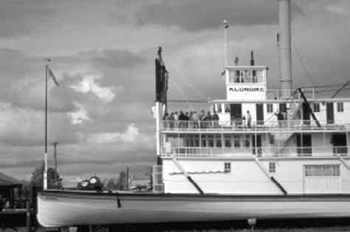
Background
Steam powered river transportation was the central element in the development and connection of the Yukon to the outside world for almost a century after the first vessel reached Fort Selkirk in 1866. The character of the system that developed was shaped by the geography of the Yukon and the technology of the riverboats. Alternative transport options developed slowly. Overland winter travel supplemented the summer river transport, but in the late 1920s a more direct challenge appeared as aircraft began regular service to Yukon communities. However, it was only during and after World War II that road transport finally ended the importance of the inland water transport system in the Yukon. The S.S. Klondike is representative of the vessels that serviced the Yukon for so long.
The S.S. Klondike was designated a National Historic Site in 1967 and restored. It has become an important contributor to the identity and landscape of the City of Whitehorse, Yukon Territory. The vessel and its site are managed by Parks Canada as vehicles for national commemoration. Other stakeholders are non-specific but have a vested interest in the continuing presence and operation of the site at its present location.
Physical Values
The historic place is the S.S. Klondike itself and does not reside in the land upon which it rests. The value of the physical resource resides in its documentation and as a representative of a type of vessel constructed for the water transportation network established in the Yukon. This includes the following elements:
- the completeness of the vessel in its hull, superstructure, propulsion and auxiliary systems.
- the surviving unity of the original vessel and equipment.
- the quality of the construction of the vessel and its components.
- the well-executed carvel planking.
- it is an example of the fast water, shallow draft sternwheel steamer that plied the upper Yukon River.
- Broad defining characteristics of importance are those:
- * systems associated with the vessel’s structure.
- * systems associated with the vessel as a freight system.
- * systems associated with the vessel as water-borne accommodation.
Associative Values
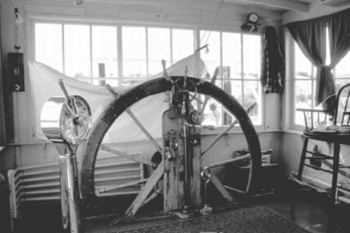
The symbolic importance of the S.S. Klondike derives from its role in the water transportation system of the Yukon and its association with other shallow draft sternwheel steamers. Its meaning is enhanced by the current setting which is defined by its proximity to the Yukon River, a major river artery, and the city of Whitehorse, one of the urban anchors of this transportation network.
1.1.b. Historic Place - Objectives
The historic place will be safeguarded when:
- the appearance and physical integrity of the vessel, as defined by original massing, surface material, colour, hull construction and design, and exterior elements (lifeboats, meat and vegetable lockers, line, spars, etc.), is maintained.
- integrity of structural framing and mechanical systems is maintained.
- interior and exterior functional organization of space is maintained.
- original materials and mechanical systems are conserved in accordance with the CRM Policy.
- representative samples of removed historic fabric will be preserved and maintained for reference purposes.
- linkages and co-operation with other authorities to foster the integrity of the historic place are actively encouraged.
- proximity and visual access to the river are maintained.
- viewscapes of the vessel and river are maintained.
1.2.a. Moveable Resources - Values
The level 1 moveable resources are important contributors to the values and messages of S.S. Klondike National Historic Site. These resources gain their value by:
- being authentic artifacts directly related to the vessel, whose provenance has been established through research and documentation.
- being authentic artifacts and identified as coming from that pool of British Yukon Navigation fittings, equipment and furniture used to annually equip Yukon River boats in the period 1937-1955 (i.e. typical of material used aboard the S.S. Klondike), whose provenance has been established through research and documentation.
- being authentic product packages, freight goods, groceries, etc. shipped into the Yukon during the period 1937-1955 (i.e. typical of material transported aboard the S.S. Klondike), whose provenance has been established through research and documentation.
1.2.b. Moveable Resources - Objectives
The site’s moveable resources which are cultural resources will be safeguarded when:
- moveable resources related to the commemorative intent of the S.S. Klondike have been evaluated, identified, protected, and maintained
- moveable resources are in their original location and relate directly to the functioning of the vessel and the reasons for its commemoration.
- strategies are in place for effective presentation.- access is ensured for research and presentation.
2. Reasons for the Site's National Historic Significance are Effectively Communicated:
The second element of commemorative integrity focuses on the effective communication of the reasons for the site’s national historic significance. Each of the elements of commemorative intent forms an important component of the learning objectives which must be met if the site is to have commemorative integrity. This means that visitors to the site must understand not only the role of the S.S. Klondike as it relates to the Yukon’s water transportation system, but also the role of inland water transportation in the development of the Yukon and Canada.
Effective delivery on these learning objectives also implies that the messages are based on research, knowledge, and awareness and sensitivity to current historiography regarding the elements of commemoration. It also suggests that presentation is balanced. This means that various perspectives on the events associated with this site are communicated. Moreover, the individual components of the story should not be treated in isolation, but are integrated into the presentation of the history of inland water transportation as a whole.
2.1 Nationally Significant Messages - Values
To achieve commemorative integrity the following learning objective for S.S. Klondike NHS must be understood by the audience:
The S.S. Klondike and its association with the inland water transportation system connecting the Yukon to the World.

Messages supporting the learning objective include:
- * The changing demands for transport in the Yukon from the early fur trade and prospecting through the gold rush and the development of the regional mining industry (dredges, silver/lead) and finally its culmination in tourism.
- * The function of river transport in the integration of the territory into the larger regional and national economy.
- * The way corporate investment in the inland water transport system shaped the character of the system developed and the services offered.
- * The connection between the Yukon’s resource-based economy and the Outside made the territory’s economy dependent upon the vagaries of the world economy.
- * The development of new transport technologies and the introduction of these and rival transport methods to the Yukon undermined the river transport system.
- * The climate and geography of the Yukon as a shaping force of the inland water transport system.
- * Riverboat technology as an engineering response to transport requirements and local conditions.
- * The workforce of the inland water transport system as a reflection of the seasonal character of the industry and the social and economic character of the Yukon Territory.
- * The complete infrastructure supporting river boat operations and the system’s role in shaping the river-based society of the Yukon in the nineteenth and twentieth centuries.
- * The environmental effects of the inland water transport system on the riparian ecology of the Yukon waterways.
2.2 Nationally Significant Messages - Objectives
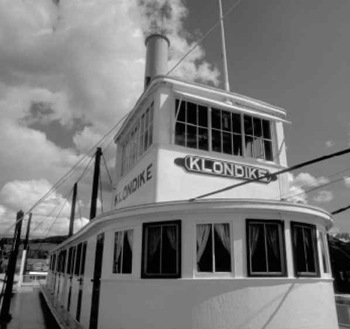
The reasons for the S.S. Klondike’s national historic significance will be effectively presented when as many Canadians as possible:
- understand the site’s national significance and its role in Canadian history.
- have knowledge of linkages between the messages of national significance and the site’s level 1 resources and other related resources.
- and when measures and measurement processes are in place to determine the effectiveness of message delivery.
3. The Site's Heritage Values are Respected
3.1 Heritage Values
S.S. Klondike National Historic Site is a Parks Canada heritage place, one part of a system of national and international heritage places. The natural and cultural heritage represented by these places is our legacy as Canadians and a significant element of Canadian identity.
Beyond the values of national historic significance, the heritage values associated with the S.S. Klondike National Historic Sites include the role played by the city of Whitehorse as an important transhipment point on the Yukon inland water transport system. This includes understanding the role and history of Whitehorse as a supply centre, a transhipment point between rail and riverboat and as the site of important shipyards and ways.
The role of S.S. Klondike National Historic Site as a gateway to the related cultural and natural heritage of the Yukon waterways is another associative value. For many visitors it is their first, or in some cases only, exposure to the rich natural and cultural heritage of the Yukon inland waterways. These additional heritage values comprise the related histories and interrelationships of sites such as the MV Tarahne in Atlin, the Thirty Mile Heritage River, S.S. Keno National Historic Site, Canyon City and Fort Selkirk with the S.S. Klondike.
Other heritage values also include the level 2 cultural resources managed by Parks Canada, and messages relating to the history of this place beyond the themes and period of commemoration. These resources and messages do not relate to the national designation, but are important to the documentation and communication of the history of water transportation in the Yukon. They include:
- authentic period materials used in the restoration of the vessel, but not having a provenance connected to the commemorative intent.
- the barge Atlin.
- the waterfront site of the S.S. Klondike.
The park like setting of the S.S. Klondike in Whitehorse has helped make the site a highly visible and attractive entry point to the City and enhanced the site’s role as an icon for the community.
The association of the site with other national historic sites relating to the Yukon (i.e. Dawson Historical Complex, Dredge No. 4, and the S.S. Keno) is acknowledged. A more general heritage value is the relationship of the S.S. Klondike to the larger family of national historic sites across Canada.
3.2 Heritage Values - Objectives
The site’s other heritage values will be respected and maintained when:
- Parks Canada is working cooperatively with other stakeholders to protect and present the full history and heritage of the inland waterways of the Yukon. This includes efforts to work with other agencies to ensure the gateway values of the site to the Yukon inland waterways are acknowledged.
- Level 2 resources are managed according to the Cultural Resource Management Policy.
- the level 2 messages pertaining to Whitehorse and the S.S. Klondike are communicated to the public.
- the waterfront setting of the S.S. Klondike is maintained.
- the S.S. Klondike’s relationship with other National Historic Sites in the Yukon is effectively communicated.
- theS.S. Klondike’s membership in the larger family of national historic sites is communicated.
Appendix A HSMBC Recommendations on the S.S. Klondike
In May, 1953 the Board considered the old river boats in Whitehorse more of local than national significance and did not recommend any action to preserve them. At the meeting of November, 1958 the Yukon riverboats were again considered, this time within the larger context of the history of transportation in Canada. The following recommendations resulted:
The Board would like to record its interest in the general subject of transportation in Canada as a matter of national historic importance, and its concern that examples of different types of transport should be preserved. The Board believes that it is of national historic importance to preserve a typical representative or representatives of lake and river stern-wheel steamship transport.
Yukon River Boats
The Board recommends further that the Minister ask the Northern administration and Lands Branch to consider the possibility of preserving one or more of the Yukon River steamers as a tourist attraction and perhaps as part of a river-steamer museum in the Yukon.
Six months later at the May, 1959 meeting the Board went further and made a definite recommendation to preserve one of the stern-wheel river boats at Whitehorse, and
The Board recommends that the purchase of one of the stern-wheel river boats at Whitehorse be arranged and that steps be taken for its preservation.
In June, 1967 the first specific Board recommendation noting the S.S. Klondike was made when discussing the question of Transportation in the context of the Gold Rush:
That the history of transportation in the Yukon be considered of national historic importance, and that it be commemorated through a display at Whitehorse, and the acquisition of appropriate transportation facilities of all types including land, water and air, the entire project centering around the S.S. Klondike.
Reviewing the site at the November, 1987 meeting, the Board re-affirmed the national significance of the vessel and recommended that:
the restored S.S. Klondike, at Whitehorse, should be given over to the interpretation of water transportation in the Yukon, exclusively.
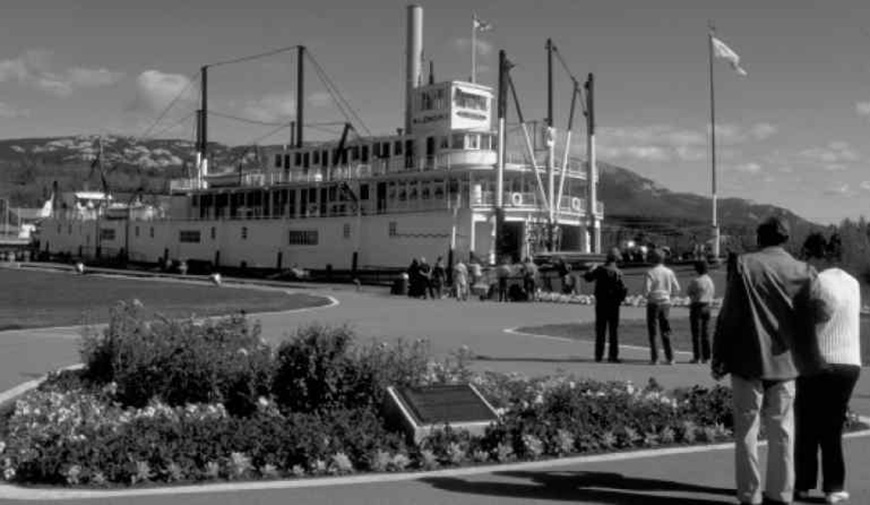
- Date modified :